Saudi Arabia. A Church of Migrants.
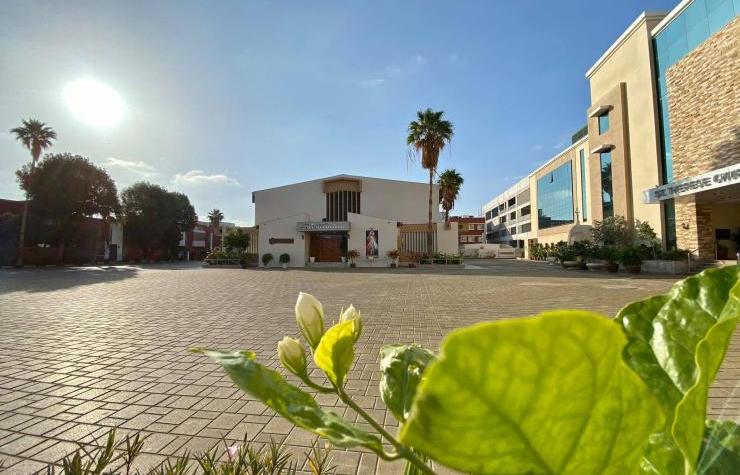
This month of July, Monsignor Paolo Martinelli celebrates one year since the beginning of his ministry as a bishop in the Vicariate of Southern Arabia. “The Arabian Peninsula challenges the Church to live her mission authentically, supporting the faith of migrants, so that in this complex society they may be witnesses of the joy of the Gospel”.
The Vicariate of Southern Arabia is made up of the United Arab Emirates, Oman, and Yemen. The Catholic faithful numbered about a million. In the United Arab Emirates, we have nine parishes and four in Oman. In the Emirates, we also have a significant number of Catholic schools that are attended by students of different religions. Some of the schools are directly managed by the Vicariate while others belong to some female religious institutes. In Yemen, unfortunately, after seven years of war, the situation is extremely difficult. The remaining Christians are few and the structure of the Church is at a minimum.
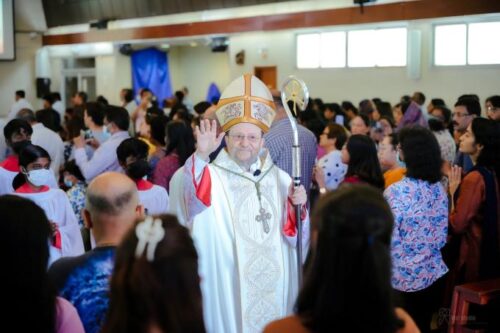
Monsignor Paolo Martinelli. (Twitter)
In the Vicariate there are currently a total of 75 priests, mostly religious and belonging to the Capuchin Franciscan order.
We are a Church of migrants. There are very few natives or those who possess citizenship. Almost all of the faithful are workers. Most Catholics come from the Philippines and India. But there is no shortage of Christians from the Arab world, mostly from Lebanon and Jordan. The faithful from Africa is evidently increasing. Although not numerous, the presence of Latin Americans, Europeans, and North Americans is also significant. Most of our Catholics are simple people; they do menial jobs and lead sober life. Although there is no shortage of high-level people who come to bring their professional expertise to these countries.
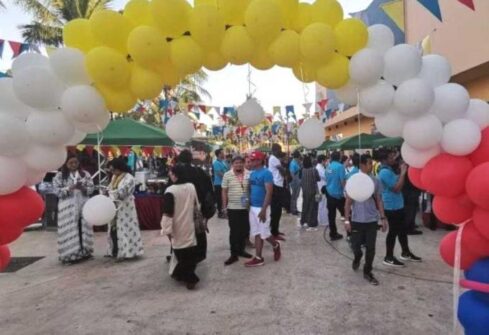
The Filipino festival in Saudi Arabia. Photo: Department of Foreign Affairs.
Given this varied composition, ours is also a pluriform Church. Our people come from different countries. They have different languages, traditions, cultures, and rites. The great challenge is to be so varied and yet form a single Church, to experience multiformity in unity. Obviously, this is not easy and sometimes leads to tensions in the parishes. It is a question of working all the time to keep ecclesial life in equilibrium between valuing the different gifts and the unity of the Church. In fact, since they are all migrants, the faithful are not only called to hold fast to their traditions of origin but to demonstrate their ability to walk together with all the members of God’s people. If the different traditions are simply preserved, the risk is that the Church may be reduced to an assemblage of linguistic communities without communication, of an exclusive nature. The authentic challenge, on the other hand, is that of the shared and inclusive journey. Respecting diversity, learning from each other, and getting to know and respect one another.
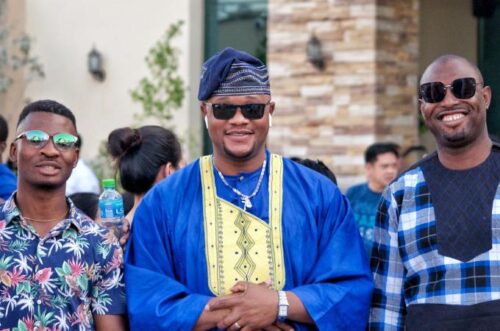
African migrates after Sunday Mass in St. Joseph Cathedral (Twitter). “We are a Church of migrants”
Priests and consecrated persons play a fundamental role in the life of this unique Church. They, in turn, come from different cultures and rites. The parishes themselves are staffed by priests who come from different countries. Many are members of the Capuchin Franciscan family but belong to different areas: India, the Philippines, Europe, Africa, and the Middle East. There is no shortage of religious from other institutes with the same characteristics. The communities of consecrated life, to which the parishes of the vicariate belong, are decidedly intercultural, just as the communities of the faithful are intercultural. The consecrated women are a minority, but they have similar characteristics. Their contribution is essentially expressed in parishes and in the management of Catholic schools, which represent a great cultural challenge. The model of consecrated life is therefore very different from the classic one we are used to seeing in the West.
In this land, interculturality and structural collaboration between different institutes for the mission of the Church constitutes the specific face of consecrated persons in the Apostolic Vicariate.
United Arab Emirates
Most of the Catholics live in the UAE. It is an extremely evolved society which has experienced impressive development since its foundation (1971) to today. It is well organized with an excellent infrastructure. The general perception is that everyone is welcome. This rapid and complex development was possible thanks to the foresight of the emirs who invested heavily in training the ruling class abroad, particularly in the United Kingdom and the USA. Furthermore, an essential contribution to development is certainly to be attributed to the immense number of migrants who make up the country’s workforce. The UAE presents itself as a country characterized by tolerance and peaceful coexistence among all who inhabit this land.
It is a country clearly characterized by the Islamic religion. However, there is freedom of worship for the Catholic Church and for other Christian denominations, as well as for other religions.
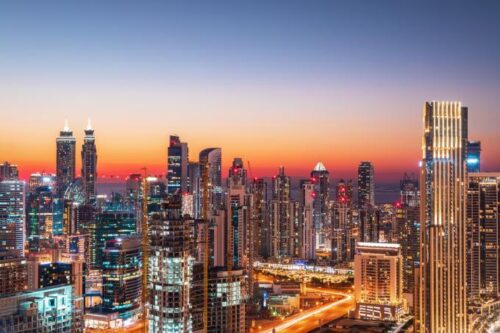
Dubai downtown at night, UAE. Photo: 123rf
The state controls all these activities to ensure that there is tolerance, and no fundamentalist or violent groups are formed. It is striking to see a country so deeply rooted in Islam and yet extremely modern, at times even hyper-modern. One can see this while visiting Dubai, an industrial city that is also a tourist attraction, dotted with an enormous number of the most varied and original skyscrapers. For those coming from Europe, a place where the contrast between religion and modernity has dominated for centuries, one is amazed to see people being faithful to the precepts of the Koran and at the same time being engaged in major development projects in all sectors of social and cultural life.
The international reputation of the United Arab Emirates from a cultural and religious point of view, experienced a moment of particular development thanks to the visit of Pope Francis in February 2019. The fundamental reason for the visit was the signing of the Document on Human Fraternity. It is an extraordinary and prophetic document. It had never previously happened that the head of the Catholic Church and a great Muslim authority, the Grand Imam of Al Ahzar, signed together a document of this magnitude.
Oman and Yemen
The Apostolic Vicariate also includes Oman, a different reality in many respects from the Emirates. Omani society offers a reassuring and mild image. The country is strongly marked by Islam, but freedom of worship is granted. We do not find hyper-modern centres like those in Dubai. The landscape is varied and invites contemplation. The pandemic crisis has significantly reduced the presence of Catholics.
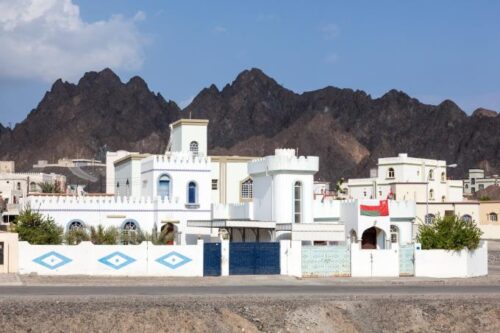
Sultanate of Oman. White houses in an Omani fishing village. Photo 123rf
Recently the Holy See and the Sultanate of Oman have established full diplomatic relations. It is a process that had begun in 1999, was subsequently interrupted, and has reached its completion in recent months. This important step could also lead to a season of greater collaboration for the Church in Oman. Our Christians, in fact, are eager to be able to give their contribution to Omani society for the good of all.
Finally, the Vicariate of Southern Arabia also includes Yemen. A land tormented by a civil war that has afflicted it for over seven years now. In reality, the Christian presence in Yemen has ancient roots. The city of Aden was the first residence of the Apostolic Vicariate of Arabia. In recent months the internal situation has improved after a few months of respite. However, situations of great suffering still remain, especially for the elderly, the sick, and children. Many Christians have fled the country because of persecution or because they have lost their jobs.
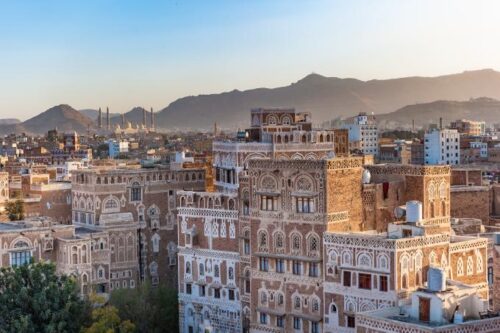
Panorama of Sanaa, capital of Yemen. Photo 123rf
At the moment, the Catholic presence consists of a few hundred faithful, significantly including some natives of Yemen. The churches were damaged during the conflicts and are currently unusable. A particularly precious presence in this country is that of the Missionaries of Charity of Mother Teresa of Calcutta. They have two religious communities and carry out the important service of welcoming disabled and elderly people. They are assisted by a priest belonging to the male branch of the institute founded by Mother Teresa.
In conclusion, the Arabian Peninsula challenges the Church to live her mission in an authentic way: by supporting the simple faith of all the migrant faithful so that they may be witnesses of the joy of the Gospel in this complex and constantly changing society, and by giving a decisive contribution to the good of all while building up a more humane and fraternal society. (Photo: Abu Dhabi. St. Joseph’s Cathedral. Twitter)



